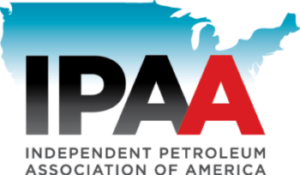Jan 10, 2023 IPAA Comments to EPA on Methane Emissions Reduction Program (Methane Tax) in Inflation Reduction Act
These comments are filed on behalf of the Independent Petroleum Association of America (IPAA). … The Environmental Protection Agency (EPA) has opened this docket for the purpose of receiving comments on its legislatively imposed Methane Emissions Reduction Program (Methane Tax). EPA describes this program as follows:
EPA received $1.55 billion to reduce methane emissions from the oil and gas sector by providing financial assistance (grants, rebates, contracts, loans, and other activities) and technical assistance as well as implementing a statutorily required waste emissions charge. Eligible recipients for these funds include but are not limited to air pollution control agencies, other public or nonprofit private agencies, institutions, and organizations, and individuals. The program specifies that at least $700 million must be used for activities at marginal conventional wells. Section 60113 also requires EPA to implement a waste emission charge on methane emitted from applicable oil and gas facilities that emit over 25,000 metric tons of CO2e and that exceed statutorily specified waste emissions thresholds beginning in 2024. The waste emissions charge will start at $900 and increase to $1,500 per metric ton.
The format for these comments is laid out in a series of questions. IPAA is providing information on several of those questions.
However, before addressing individual issues, it is pertinent to address some overarching aspects of this program. While these questions largely address the distribution of various authorized funds for enumerated purposes, this program also authorizes EPA to use any authorized funds for the implementation of the program. The magnitude of these costs is currently unknown, but since it can include the development of emissions reporting tools, the auditing of all submissions of both emissions and taxes, the levying and collection of penalties and whatever else may fall under the scope of the program, these costs may be substantial.
Additionally, EPA is given the authority to “issue guidance or regulations as necessary to carry out this section.” This is an important and significant authority that EPA must use judiciously. This program presents the worst situation for regulatory development: legislative language with no legislative history. There are no committee reports, no conference report, not even floor statements during the debate on the legislation. Significant terms in the provisions are not defined. Now, EPA must issue clear and comprehensive regulations to assure that the program is carried out effectively and fairly. …








